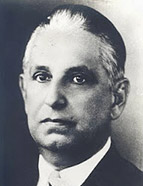

Wanderley Pinho's historiographical legacy primarily focuses on figures and issues related to Bahia, with some of the themes he explores closely intertwined with the history of his own family. Like many historians of his generation, Wanderley did not deeply reflect on the nature of historical knowledge. However, although he regarded it as a science, with its premises requiring empirical validation by the historian. His research preferences vary between the field of political history and that of social history. In the former, his work is characterised by monographs, documentary studies, and biographical analyses, blending erudition with literary elegance. Notable among his titles is Cotegipe e seu tempo. Primeira Fase (1815-1867) [Cotegipe and its time. First Phase], a work planned to be continued and to represent a lengthy biography of his grandfather, but which unfortunately remained incomplete. He also authored the comprehensive historical synthesis on Bahia between 1808 and 1856, included in the volume O Brasil Monárquico [Monarchical Brazil] from the collection História Geral da Civilização Brasileira [General History of Brazilian Civilization], led by Sérgio Buarque de Holanda.
Also centred on the 19th-century political scene are his works transcribing and annotating the letters of Emperor Pedro II to the Baron of Cotegipe (1933), as well as the active correspondence of Councillor Francisco Otaviano de Almeida Rosa (1825-1889). This final task remained incomplete due to his death but was later finished through the efforts of Enéas Martins Filho and subsequently Alphonsus de Guimaraens Filho, who undertook the preparation of the content of the letters for publication (1977). His work within the field of social history began early, in 1918, with the thought-provoking monograph “Costumes monásticos na Bahia – freiras e recolhidas” (Monastic Customs in Bahia – Nuns and Reclused), a book now regarded as a classic. At the time of its publication, however, the subject matter surprised readers by uncovering mundane customs and social practices within the convents of Lapa and Desterro in 18th-century Bahia, previously unknown aspects of cloistered life that today would be considered part of cultural history.
This work is financed by national funds through FCT - Foundation for Science and Technology, I.P, in the scope of the projects UIDB/04311/2020 and UIDP/04311/2020.
